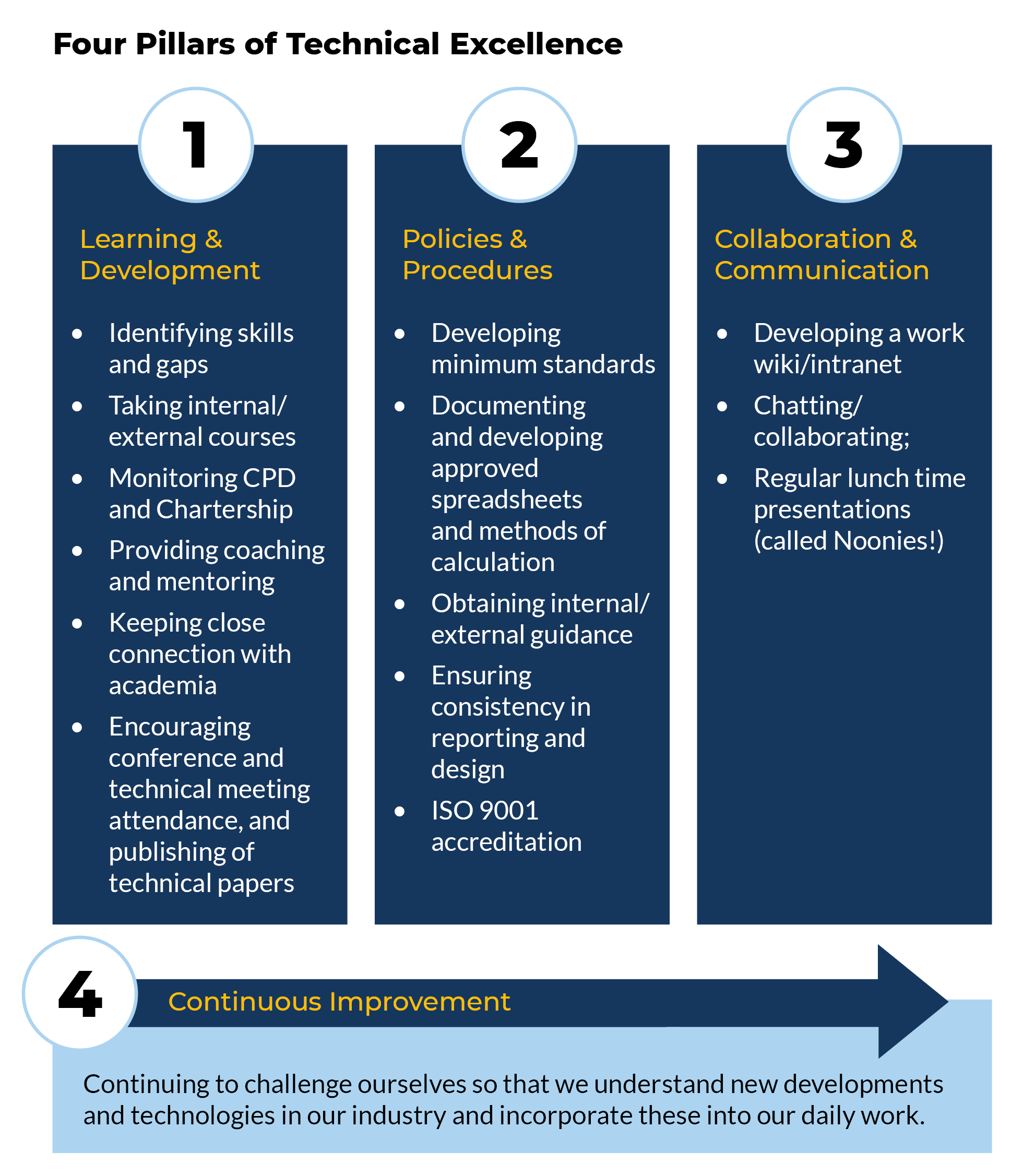By Richard Justice
Technical Excellence is a goal of all engineering organisations and individuals. But what do we mean by ‘Technical Excellence’? What it does not mean, at least for ENGEO, is modelling the client’s problem on some up-to-the-minute software program, just because we can, then presenting the client with an overly complex answer, with the hope of creating a feeling of awe.
Philosophically, we believe ‘Technical Excellence’ encompasses the application of advanced science, underpinned by a thorough understanding of core principles, to arrive at optimal solutions within a setting of ethical, societal, and environmental responsibility.
Technical Excellence involves personal accountability. Everyone must understand and believe that they are responsible for our continuing success. It also involves organisational responsibility to provide the proper training, tools, and environment.
At ENGEO, we’ve built on some great ideas from NASA to define what ‘Technical Excellence’ means to us as an organisation. We believe it encompasses four pillars:

ENGEO’s Technical Excellence Group (TEG) is tasked with coordinating our efforts in each of these pillars. The TEG meets as a collective and as pillar-specific groups at least monthly, to provide focus and review the progress that we have made. While meetings are periodic, our fourth pillar means we are working continuously to improve!
So how do we measure technical excellence? Perhaps we can measure by clients and revenue, professional journal publications, positive feedback, or company profit. Or perhaps, in the end, we don’t need to. It’s just part of who we are and why we do what we do!
Reference:
TECHNICAL EXCELLENCE: A REQUIREMENT FOR GOOD ENGINEERING.
Paul S. Gill and William W. Vaughan (2008)
https://ntrs.nasa.gov/archive/nasa/casi.ntrs.nasa.gov/20080014086.pdf